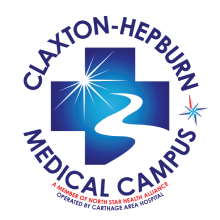Summer Fun: Protect Your Skin, Protect Your Life
- Category: CHMC News, Health & Wellness
- Posted On:

Although Melanoma Awareness Month was in May, the summer months are a critical time to raise awareness about skin cancer, prevention, detection, and treatment. Melanoma, though less common than other skin cancers, is considered the most dangerous type of skin cancer because of its ability to spread quickly if not detected early.
Understanding Skin Cancer: Types and Risks
Skin cancer includes several types, the most common being:
Basal Cell Carcinoma (BCC) - The most frequent type, typically appearing as a small, shiny bump or a red, irritated patch of skin. BCC rarely spreads but can grow deep and cause damage to surrounding tissues.
Squamous Cell Carcinoma (SCC) - Usually appears as a scaly, crusty patch, or a firm, red nodule. SCC is more aggressive than BCC and can spread to other parts of the body if not treated promptly.
Melanoma - The most dangerous type, melanoma often starts as an irregular mole that changes in color, shape, or size. It can rapidly spread to other organs if not identified early, making prompt detection and treatment critical.
Identifying Skin Cancer: What to Look For
Early detection is key to successful treatment. Be aware of the ABCDEs of melanoma:
Asymmetry: One half of the mole doesn't match the other.
Border: Edges are irregular, scalloped, or poorly defined.
Color: Varied shades of brown, black, or even patches of pink, red, white, or blue.
Diameter: Usually larger than 6mm (about the size of a pencil eraser), though melanomas can be smaller.
Evolving: Any change in size, shape, color, or texture, or any new symptom like bleeding, itching, or crusting.
Statistics: Adults and Children
According to the Skin Cancer Foundation, one in five Americans will develop skin cancer by age 70. Melanoma rates are increasing, especially among young adults and adolescents, making awareness and prevention efforts critically important.
Melanoma is the second most common form of cancer in females aged 15-29.
While rare, pediatric melanoma does occur, emphasizing the importance of protecting children from excessive sun exposure early in life.
Sun Protection Tips
To protect yourself and your loved ones effectively:
Apply sunscreen generously with at least SPF 30, broad-spectrum (protecting against UVA and UVB rays), 30 minutes before sun exposure, and reapply every two hours or immediately after swimming or sweating.
Seek shade and avoid direct sun exposure, especially during peak sunlight hours between 10 a.m. and 4 p.m.
Wear protective clothing such as long-sleeved shirts, long pants, wide-brimmed hats, and UV-blocking sunglasses.
Be cautious around reflective surfaces such as water, sand, snow, and concrete, which can increase your risk of sunburn.
Regularly perform thorough skin self-exams monthly, and schedule annual dermatological check-ups.
Screening and Care in Your Community
For comprehensive skin cancer screening and dermatological care, consider visiting:
Richard E. Winter Cancer Center
Located in Ogdensburg, NY, the Richard E. Winter Cancer Center offers dedicated screenings and advanced treatments for skin cancer, emphasizing early detection and comprehensive patient support.
5 Lyon Place, Ogdensburg, NY 13669
Phone: 315.393.2314
Carthage Dermatology Clinic (Now Open!)
1001 West Street, Carthage, NY
Phone: 315.493.0110
Open Monday - Friday, 7:30 a.m. - 4:00 p.m.
Offering:
Full-body skin cancer screenings
Skin cancer diagnosis and personalized treatment plans
Urgent evaluations for skin concerns
Led by Amy Lynn Werchinski, MPAS, PA-C, the clinic provides tailored dermatology care for all ages, emphasizing long-term patient relationships and holistic care approaches. Same-day appointments are available for urgent concerns.
Take action this summer to protect your skin and ensure your health. Schedule your screening today!

.1).png)

.jpg)
